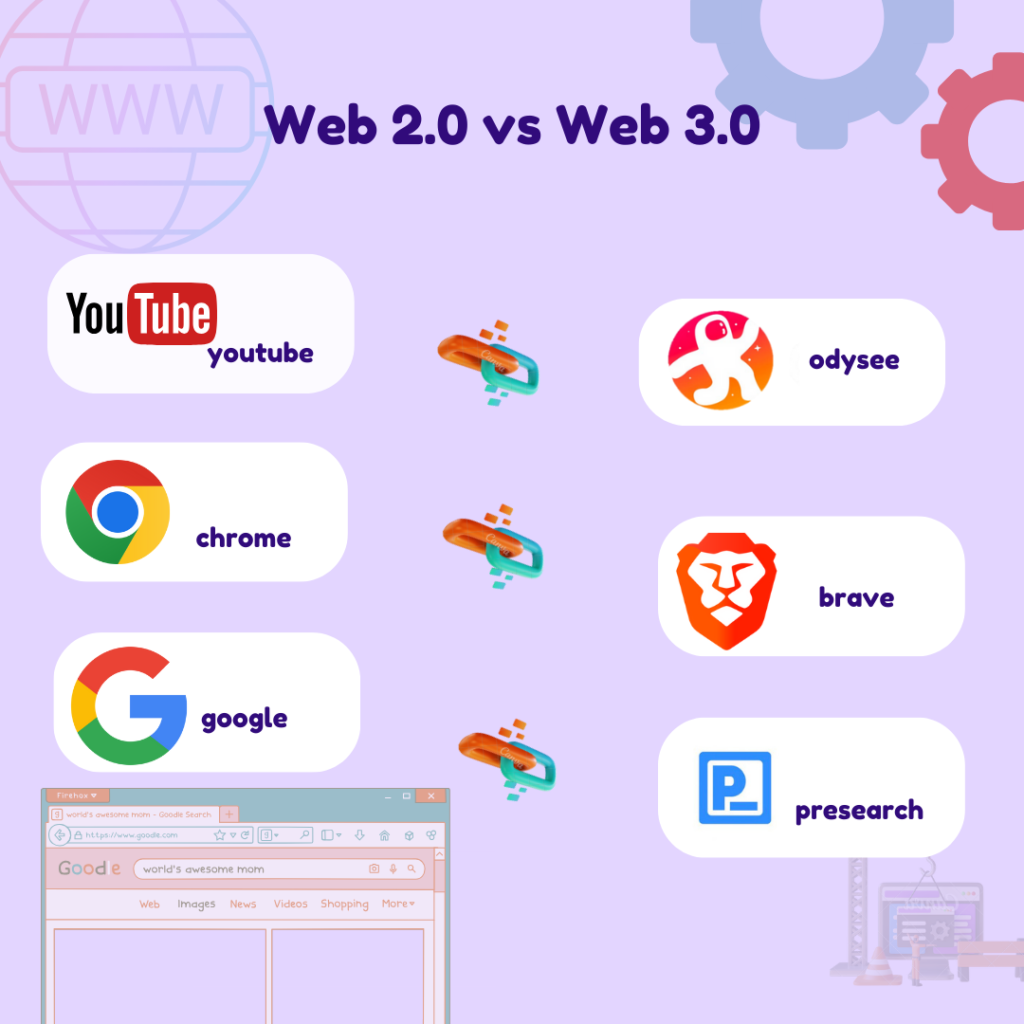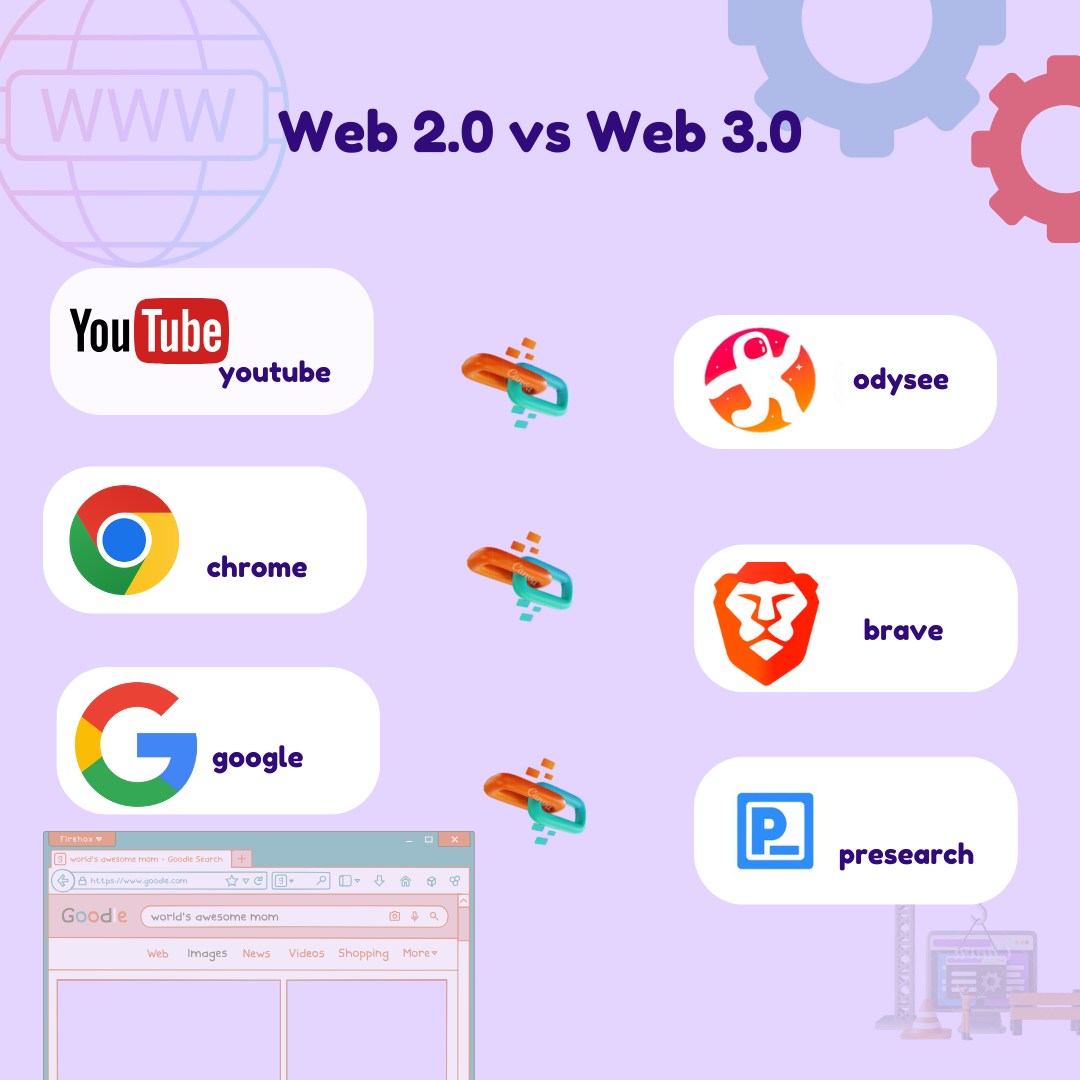Web 2.0 and Web 3.0 address two particular stages in the development of the web, each described by its own arrangement of advancements, client encounters, and abilities. Here is a concise distinction between the two

Technology and Interactivity:
- Web 2.0: Web 2.0, frequently alluded to as the “Social Web,” arose during the 2000s. It was described by the far reaching reception of innovations like AJAX, which empowered more unique and intuitive web applications. Clients could partake in happy creation and sharing through stages like websites, web-based entertainment, and wikis. It was basically about client created content and joint effort.
- Web 3.0: Web 3.0, in some cases called the “Semantic Web” or “Decentralized Web,” is an idea still during the time spent improvement starting around my last information update in September 2021. It’s undeniable by the joining of innovations like blockchain, man-made brainpower, and semantic information to make a more smart, decentralized, and customized web insight. Web 3.0 means to make information and administrations machine-reasonable and empower further developed robotization and personalization.
Data Handling:
- Web 2.0: Web 2.0 fundamentally depended on client produced information, frequently unstructured, to make content and fabricate interpersonal organizations. Web crawlers in this time to a great extent depended on watchword coordinating.
- Web 3.0: Web 3.0 spotlights on organized and semantically labeled information, making it more straightforward for machines to comprehend and handle data. This shift means to empower more refined simulated intelligence driven applications and administrations.
Centralization versus Decentralization:
- Web 2.0: Many Web 2.0 stages were brought together, meaning they were claimed and worked by a solitary element (e.g., Facebook, Twitter). Information and control were moved in the possession of these substances.
- Web 3.0: Web 3.0 advances decentralization through blockchain and decentralized conventions. It intends to give clients more command over their information and online characters while diminishing dependence on focal specialists.
User Experience:
- Web 2.0: Client encounters in Web 2.0 were described by person to person communication, content sharing, and joint effort. It was tied in with associating individuals and empowering them to communicate their thoughts on the web.
- Web 3.0: Web 3.0 imagines more customized and shrewd client encounters. It means to offer clients more important substance and administrations by utilizing man-made intelligence calculations that figure out setting and client inclinations.
Examples:
- Web 2.0: Facebook, YouTube, Wikipedia, and Twitter are instances of conspicuous Web 2.0 stages.
- Web 3.0: Starting around my last update, projects like Ethereum, IPFS (Inter-Planetary Document Framework), and Strong (Tim Berners-Lee’s task) are frequently connected with the Internet 3.0 vision.
It’s critical to take note of that the change from Web 2.0 to Web 3.0 is as yet continuous, and the full acknowledgment of Web 3.0’s true capacity might require a few additional years as new innovations and guidelines keep on creating.
